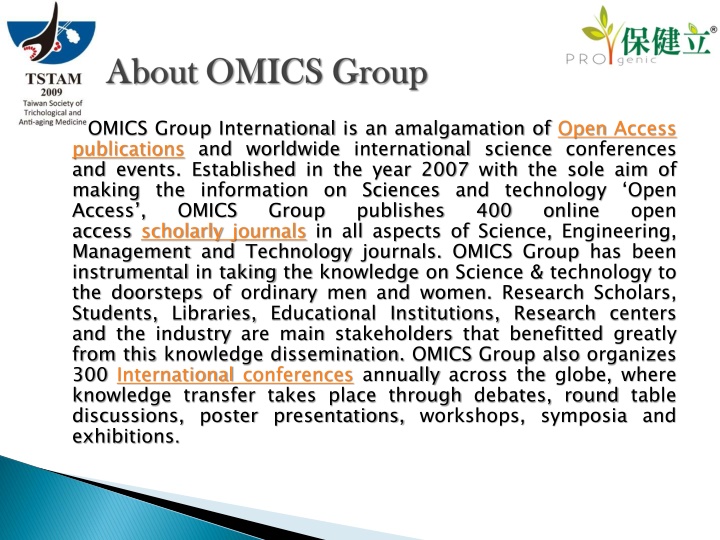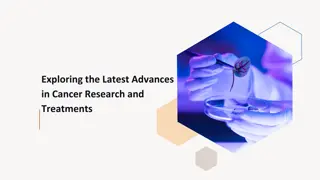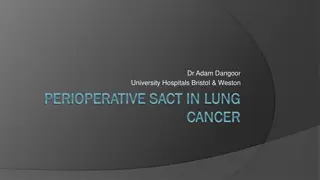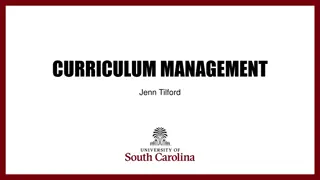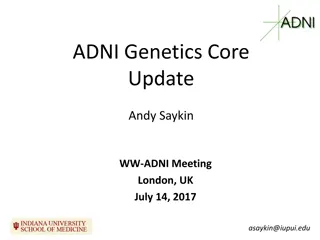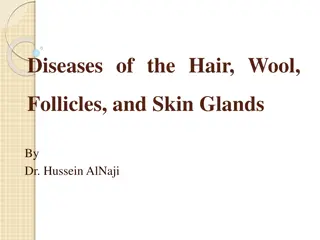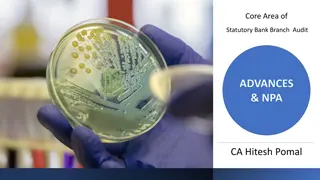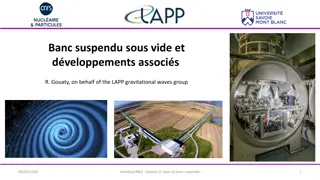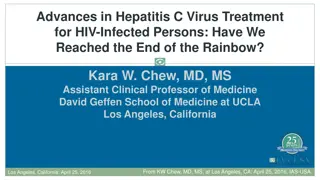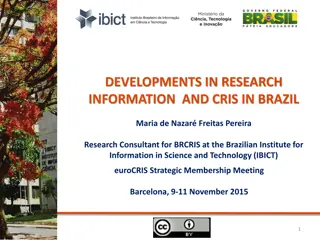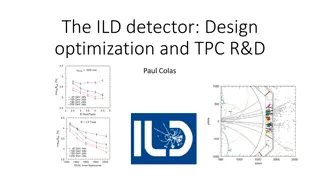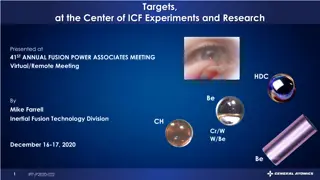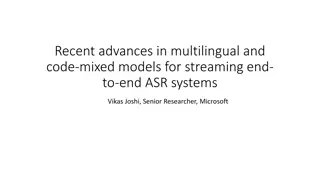Latest Advances in Androgenetic Alopecia Research
The OMICS Group International is a pioneering force in knowledge dissemination in the fields of Science, Engineering, Management, and Technology, organizing over 300 conferences annually and publishing 400 open access journals. In the realm of alopecia research, their work sheds light on the molecular pathways and mechanisms behind Androgenetic Alopecia (AGA), a condition that affects a significant portion of the male population. Insights into DHT conversion by 5-alpha reductase and its implications on hair follicle growth and life span provide valuable information for researchers and clinicians striving to combat hair loss and promote follicle regeneration.
Download Presentation

Please find below an Image/Link to download the presentation.
The content on the website is provided AS IS for your information and personal use only. It may not be sold, licensed, or shared on other websites without obtaining consent from the author.If you encounter any issues during the download, it is possible that the publisher has removed the file from their server.
You are allowed to download the files provided on this website for personal or commercial use, subject to the condition that they are used lawfully. All files are the property of their respective owners.
The content on the website is provided AS IS for your information and personal use only. It may not be sold, licensed, or shared on other websites without obtaining consent from the author.
E N D
Presentation Transcript
OMICS Group International is an amalgamation of Open Access publications and worldwide international science conferences and events. Established in the year 2007 with the sole aim of making the information on Sciences and technology Open Access , access scholarly journals in all aspects of Science, Engineering, Management and Technology journals. OMICS Group has been instrumental in taking the knowledge on Science & technology to the doorsteps of ordinary men and women. Research Scholars, Students, Libraries, Educational Institutions, Research centers and the industry are main stakeholders that benefitted greatly from this knowledge dissemination. OMICS Group also organizes 300 International conferences annually across the globe, where knowledge transfer takes place through debates, round table discussions, poster presentations, workshops, symposia and exhibitions. OMICS Group publishes 400 online open
OMICS Group International is a pioneer and leading science event organizer, which publishes around 400 open access journals and conducts over 300 Medical, Clinical, Engineering, Life Sciences, Phrama scientific conferences all over the globe annually with the support of more than 1000 scientific associations and 30,000 editorial board members and 3.5 million followers to its credit. OMICS Group has organized 500 conferences, workshops and national symposiums across the major cities including San Francisco, Las Vegas, San Antonio, Omaha, Orlando, Raleigh, United Bengaluru and Mumbai. Santa Kingdom, Clara, Valencia, Chicago, Philadelphia, Dubai, Baltimore, Hyderabad, Beijing,
Jack Sung,1Jiang, Meili,2 Wang, Zunyan3 President, Asiamedic Biotechnology; Director, Jiang s Anesthetic Clinic; President, Taiwan Society of Trichological and Anti-aging Medicine
DHT converted by 5- Reductase suppresses hair follicle growth, miniaturing follicle tissue and life span TGF- 1 secreted by DPCs induces catagen, leading to prematured hair loss Hair follicle microinflammation & fibrosis block follicle regeneration to next anagen and diminish hair density
Androgenetic Alopecia (AGA) is a common disease affecting over 50% male population over 50 years old in the United Stats.
The main molecular pathway has been accepted that 5-alpha reductase in the fast growing cells outside dermal papilla of hair follicle converting testosterone into dihydrotestosterone (DHT). DHT then binds androgen receptor and the complex of which next binds DNA in cell nucleus, resulting in growth arrest of follicle cell and gradual decrease of protein synthesis. Such molecular pathway prevents vellus hair growing into terminal hair in the next shortened anagen phase
Normal function of the androgen receptor. Testosterone (T) enters the cell and, if 5- alpha-reductase is present, is converted into dihydrotestone (DHT). Upon steroid binding, the androgen receptor (AR) undergoes a conformational change and releases heat shock proteins (hsps). Phosphorylation (P) occurs before and / or after steroid binding. The AR translocates to the nucleus where dimerization, DNA binding, and the recruitment of coactivators occur. Target genes are transcribed (mRNA) and translated into proteins following sources: Target genes are transcribed (mRNA) and translated into proteins. Original work, adapted from the Meehan KL, Sadar MD. Androgens and androgen receptor in prostate and ovarian malignancies. Front Biosci. 2003;8780- 800. Gottlieb B, Lombroso R, Beitel LK, Trifiro MA. Molecular pathology of the androgen receptor in male (in)fertility. Reprod biomed online. 2005;10:42:48. Choong CS, Wilson EM. Trinucleotide repeats in the human androgen receptor: a molecular basis for the disease. J Mol Endocrinol. 1998;21:235 - 257. Quigley CA, De Bellis A, Marschke KB, El-Awady MK, Wilson EM, French FS. Androgen receptor defects: historical, clinical, and molecular perspectives. Endocr Rev. 1995;16:271 - 321.
Androgen inhibited the growth of KCs by 50%, indicating that the DPCs produce dffusible growth suppressive factors into the medium in an androgen-dependent manner. The results showed that androgen treatment increased the secretion of TGF-b1 into the conditioned medium. Moreover, neutralizing anti-TGF-b1 antibody reversed the inhibition of KC proliferation. Thus, we suggest that androgen-inducible TGF-b1 derived from DPCs mediates hair growth suppression in AGA. .
Department of Dermatology, Hokkaido University Graduate School of Medicine, Sapporo, Japan J. Dermatological Science 2006
Methods Recombinant human PDGF-AA and PDGF-BB were dissolved in sterile and toxin-free phosphate-buffered saline containing 0.1% bovine serum albumin (0.1% BSA-PBS). 1 g PDGF-AA or PDGF-BB dissolved in 100 l of 0.1% BSA-PBS and 0.1%BSA-PBS for controls were intradermally injected into the dorsal skin of 47-day- old male C3H mice (second telogen) once daily for 5 consecutive days (total 5 g of PDGF isoforms) (PDGF- AA, n=5;5 PDGF-BB, n=5; control, n=5). All mice were sacrificed 10 days after the injections anti-PDGF-AA antibody or anti-PDGF-BB antibody was injected just after each injection of PDGF-AA or PDGF- BB (anti-PDGF-AA antibody following PDGF-AA, n=5; anti-PDGF-BB antibody following PDGF-BB, n=5).
Results The area in close proximity to the injection sites in 3 out of 5 mice became darkened in color, indicating that HFs were in the anagen hair cycle phase (Figs.1a, 1d), whereas the injection sites using just the vehicle solution alone (0.1% BSA- PBS) all five mice retained their normal white color, suggesting that they remained in telogen phase. Expression of Shh, Wnt5a and Lef-1 was upregulated in the skin samples in which anagen had been induced by PDGF local injections
Conclusions These results indicate that both PDGF-AA and -BB are involved in the induction and maintenance of the anagen phase in the mouse hair cycle. Local application of PDGF-AA and -BB might therefore prove to be an effective treatment option for alopecia associated with early catagen induction and elongated telogen phase.
Eric Festa, Jackie Fretz, Ryan Berry, Barbara Schmidt, Matthew Rodeheffer, Mark Horowitz, and Valerie Horsley, Departments of Molecular, Cell, and Developmental Biology Yale Stem Cell Center
We injected PDGFA-coated beads intradermally into Ebf1 null mice at P21. Three days after bead implantation, a majority of follicles adjacent to PDGFA- coated beads displayed morphologies characteristic of anagen follicles. This growth induction increased with elevated concentrations of PDGFA with 100ng/ml activating 86% of adjacent follicles, demonstrating a dose dependency of activation of Ebf1 null hair follicles.
Expression of PDGFA in adipocyte precursor cells was elevated almost 100 fold over the expression in SVF cells. Mice lacking PDGFA display phenotypic similarities with Ebf1 null mice, including a delay of follicle stem cell activation that blocks anagen induction (Karlsson et al., 1999; Tomita et al., 2006).
Adipocyte lineage cells are not the only cell type in the skin that expresses PDGF ligands, multiple cells in the follicular epithelium, the matrix and the hair germ, have been shown to express PDGF (Karlsson et al.,1999). Additional signals expressed by intradermal adipocytes may also be involved in signaling to the DP or epithelium (Park et al., 2010).
Hair follicle stem cells should be activated to gain new hairs Activation 5- Redutase and TGF- 1 pathways should be blockaged Blockage Hair follicle microinflammation & fibrosis should be addressed Control
PRP (Platelet-Rich-Plasma) is collected Material PRP Proceeded (lyophilization, radiation) Process PDGF/VEGF Isolation from Platelet Isolation
PRP powder in 60/125mg PDGF solution in 300/600ng vial
Treatment goal: Hair density at 120 hairs /cm2 Terminal hair/vellus hair ratio improved
Great hair regrowth in all regions except for crown early hair fall out caused by TGF- 1 Before 2010.07.08 4 treatments 2010.09.08 F/U 2010.12.10
Before 2010.07.08 After 23 weeks 2010.12.08
2010.07.08 2010.12.08 23
2011.01.06 2011.02.24 2011.04.05 2011.06.30 2011.07.28
Before @ 2013.04.20 2013.06.22
New hair gain = 40 hairs x 300cm2= 12,000 hairs Before @ 2013.04.20 2013.06.22
